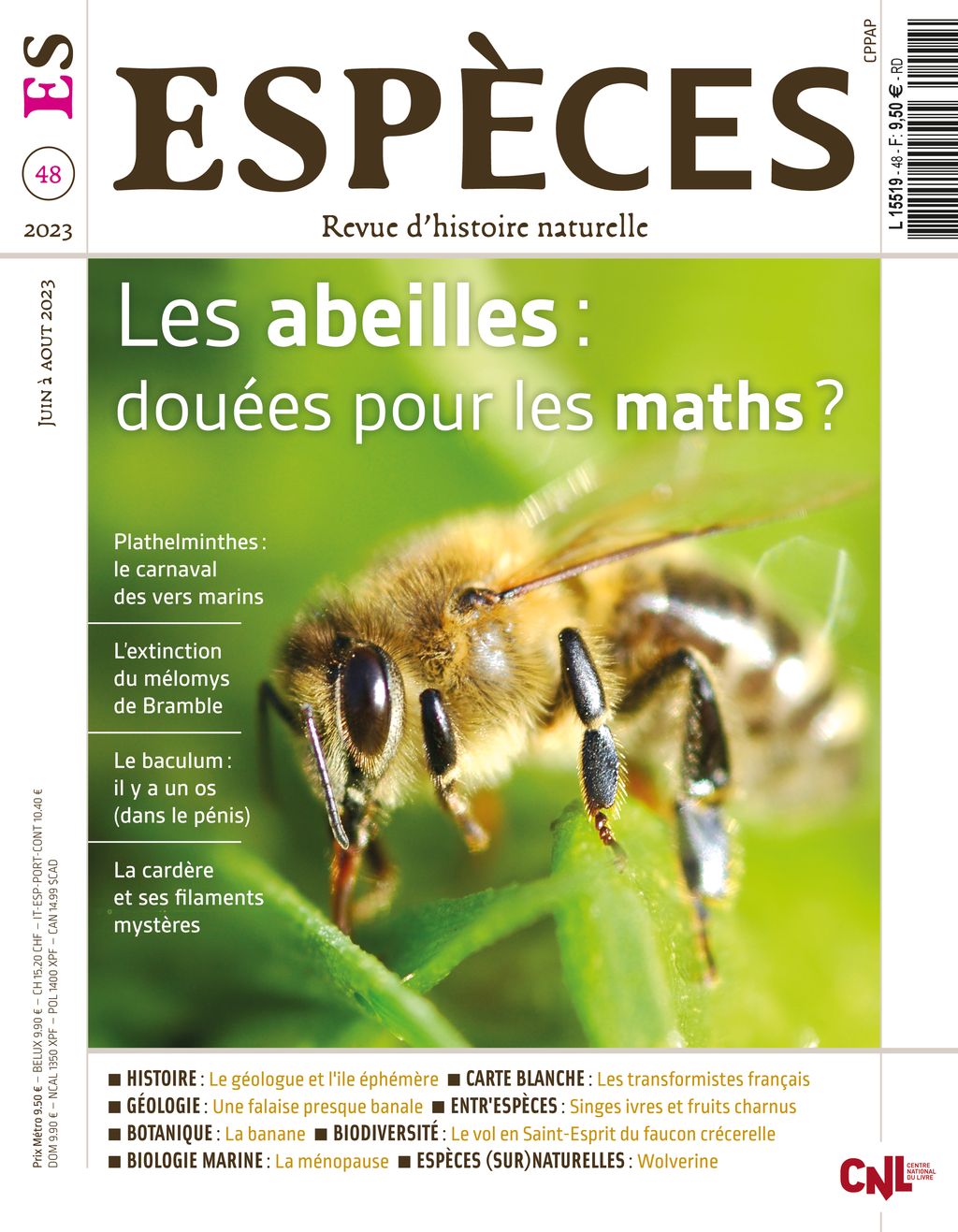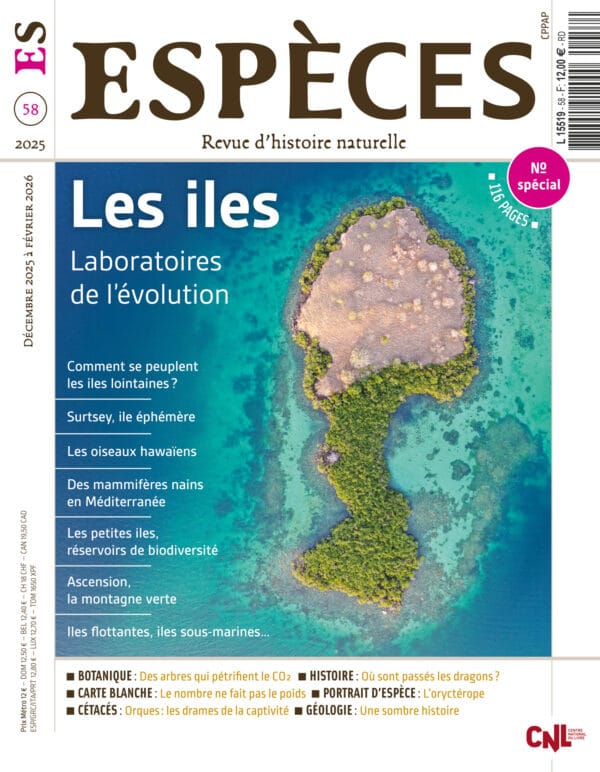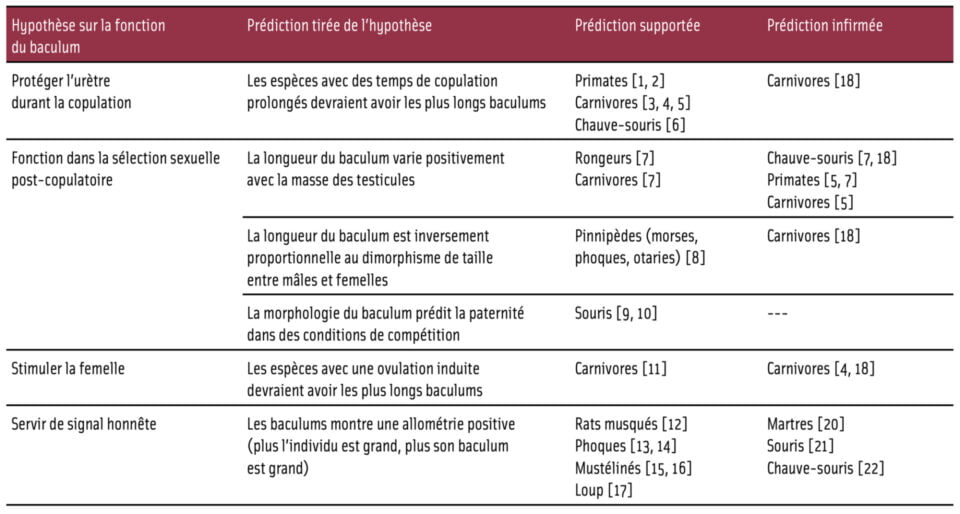[1] Dixson A. F. et al., 1987 – “Baculum length and copulatory behavior in primates”, American Journal of Primatology, 13(1), p. 51-60 (Doi : 10.1002/ajp.1350130107).
[2] Dixson A. F. et al., 1987 – “Observations on the evolution of the genitalia and copulatory behaviour in male primates”, Journal of Zoology, 213(3), p. 423-443 (Doi : 10.1111/j.1469-7998.1987.tb03718.x).
[3] Brassey C. A. et al., 2018 – “Testing hypotheses for the function of the carnivoran baculum using finite-element analysis”, Proceedings of the Royal Society B: Biological Sciences, 285(1887), article n° 20181473 (Doi : 10.1098/rspb.2018.1473).
[4] Dixson A. F., 1995 – “Baculum length and copulatory behaviour in carnivores and pinnipeds (Grand Order Ferae)”, Journal of Zoology, 235(1), p. 67-76 (Doi : 10.1111/j.1469-7998.1995.tb05128.x).
[5] Brindle M. et Opie C., 2016 – “Postcopulatory sexual selection influences baculum evolution in primates and carnivores”, Proceedings of the Royal Society B: Biological Sciences, 283(1844), article n° 20161736 (Doi : 10.1098/rspb.2016.1736).
[6] Herdina A. N. et al., 2015 – “Testing hypotheses of bat baculum function with 3D models derived from microCT”, Journal of Anatomy, 226(3), p. 229-235 (Doi : 10.1111/joa.12274).
[7] Ramm S. A., 2007 – “Sexual selection and genital evolution in mammals : a phylogenetic analysis of baculum length”, The American Naturalist, 169(3), p. 360-369 (Doi : 10.1086/510688).
[8] Fitzpatrick J. L. et al., 2012 – “Male contest competition and the coevolution of weaponry and testes in pinnipeds”, Evolution: International Journal of Organic Evolution, 66(11), p. 3595-3604 (Doi : 10.1111/j.1558-5646.2012.01713.x).





